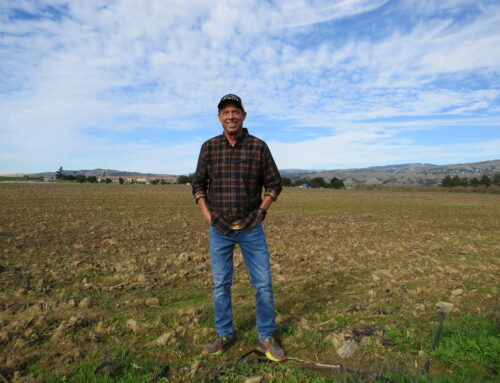“This is an emergency,” Valley Water CEO Rick Callender says of drought
![]()
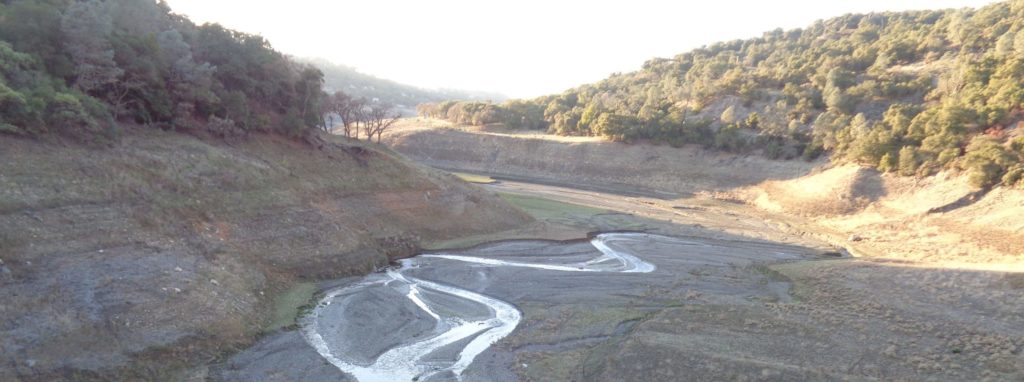
Anderson Reservoir is now virtually empty, with only 3 percent of capacity water, so the dam can be replaced because of earthquake risk. Morgan Hill Life file photo
By Staff Report
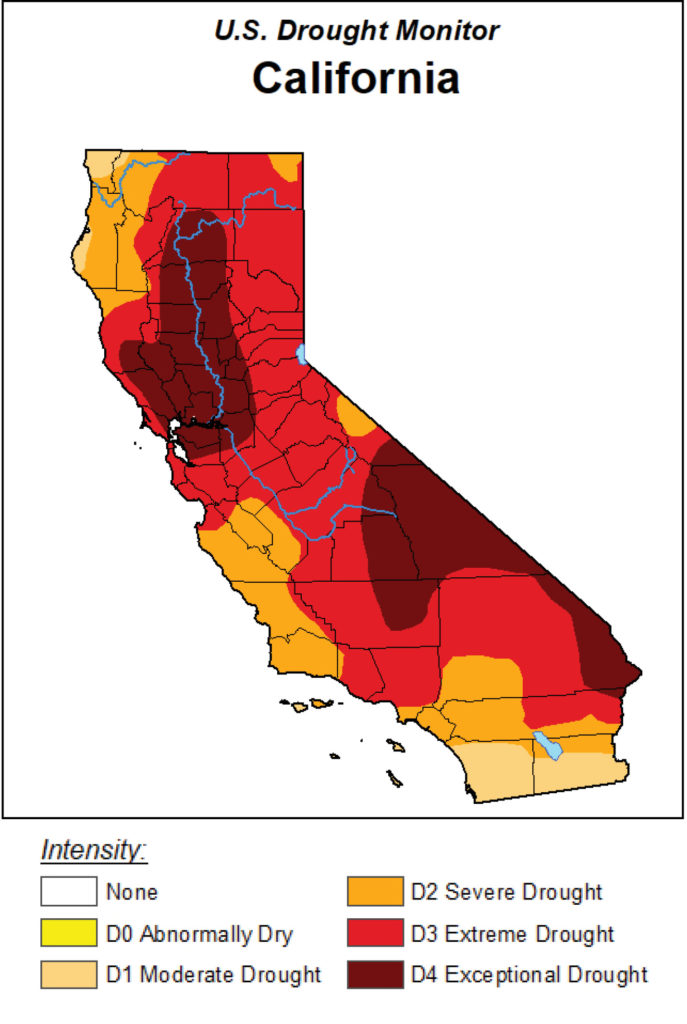 Residents of Morgan Hill will face strict water restrictions as the western drought conditions grow worse. Significant residential changes include limiting lawn watering hours, duration and days, and limits on washing vehicles or paved areas.
Residents of Morgan Hill will face strict water restrictions as the western drought conditions grow worse. Significant residential changes include limiting lawn watering hours, duration and days, and limits on washing vehicles or paved areas.
The city of Morgan Hill declared a Level 2 Water Supply Shortage effective immediately. It was approved unanimously by the city council at the June 16 meeting. The declaration comes on the heels of the Santa Clara Valley Water District Board’s announcing a water shortage emergency impacting the entire county.
“Put simply, it’s been a dry year,” said Christina Turner, city manager for Morgan Hill. “Water resources and reserves are lower both in and out of the county affecting residents in many cities. The restrictions in place now are meant to avert an even worse crisis in the future. Conservation and a minimal water use mindset are a part of life for all of us.”
There are multiple components to the new water restrictions:
Typical lawn and garden bed sprinkler irrigation is now limited to:
- Mondays and Thursdays for odd numbered addresses and properties with no address
- Tuesdays and Fridays for even numbered addresses
- Irrigation shall only be scheduled before 9 a.m. or after 7 p.m.
- Prevent runoff in any watering cycle
- Each valve or zone shall run for a maximum of 15 minutes in any one day
For businesses, limits now exist on automatically serving water at restaurants, hotels offering guests the option to decline daily linen service, and construction sites using non-potable water for most site activities.
 Find a complete list of restrictions, plus several tips and resources available at www.mhvalueswater.com.
Find a complete list of restrictions, plus several tips and resources available at www.mhvalueswater.com.
About 50 percent of the county’s water supply comes from outside the county. The low rainfall and depleted Sierra Nevada snowpack caused a significant reduction in imported water the county can receive this year.
A Level 2 Water Supply Shortage is defined as a 21 to 40 percent consumer demand reduction to make more efficient water use. Full descriptions of Levels 1, 2, 3 as described by the City of Morgan Hill Ordinance No. 2236 are available at mhvalueswater.com.
The Valley Water Board of Directors voted June 9 to declare a water shortage emergency condition in Santa Clara County. They also urged the Santa Clara County Board of Supervisors to proclaim a local emergency.
The action implements a 15 percent mandatory water use reduction from 2019 levels. In the previous drought, Valley Water mandated water usage to drop 25 percent from 2013 levels.
The declaration lets Valley Water work with cities and the county to launch regulations and restrictions on how water is delivered and consumed.
 “This is an emergency,” Valley Water CEO Rick Callender said in a press release. “Our water supplies are in serious jeopardy. Valley Water will protect our groundwater resources by all reasonable means necessary and ensure we can provide safe, clean water to Santa Clara County. Every drop of water saved is a drop we can use in the future.”
“This is an emergency,” Valley Water CEO Rick Callender said in a press release. “Our water supplies are in serious jeopardy. Valley Water will protect our groundwater resources by all reasonable means necessary and ensure we can provide safe, clean water to Santa Clara County. Every drop of water saved is a drop we can use in the future.”
California has seen the second driest back-to-back winter seasons on record. The drought has forced drastic reductions to Valley Water’s allocations of imported water from the State Water Project and Central Valley Project.
Valley Water staff have been working on withdrawing previously stored water supplies from its out-of-county groundwater bank near Bakersfield and purchasing emergency water from its partners.
But those supplies are not guaranteed. The drought has increased competition for a limited supply from other retailers, raising the price of water from about $200 an acre-foot to as much as $2,000 an acre-foot, said Valley Water Vice Chairperson Gary Kremen.
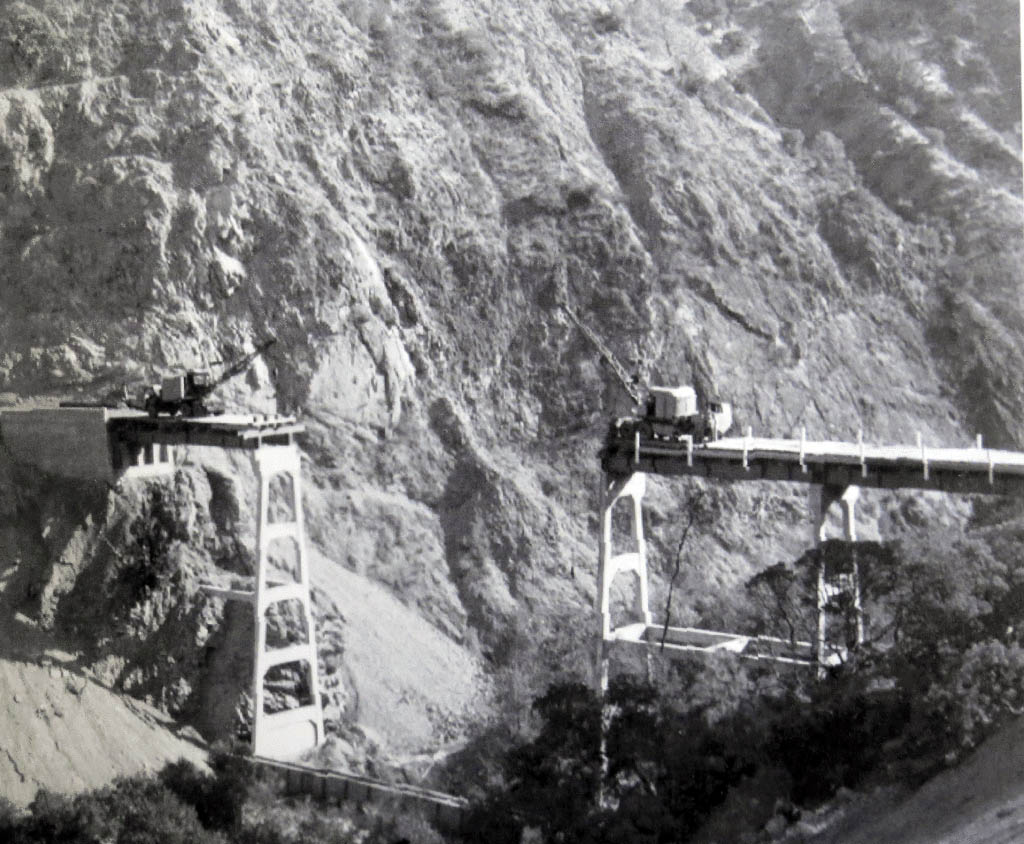
Anderson Dam being built in the 1950s.
Photo courtesy Valley Water
“We’re having trouble buying water on the open market because everyone else is buying it at the same time,” he said. “The price is about 10 times what it was two years ago.”
Snow-melt runoff in the Sierras reaching the Delta region of California has been significantly reduced because of the drought, adding to the state’s water woes, he said.
“It was so dry last year the water went right into the ground and didn’t flow into the reservoirs and rivers,” he said.
Adding to the county’s local water supply challenges, Anderson Reservoir was drained to 3 percent capacity starting last fall under the Federal Energy Regulatory Commission’s order for public safety.
Geologists warned the dam structure might fail if a major earthquake occurred along the fault running under the lake. It is expected to remain nearly empty for at least a decade as construction proceeds with a seismic retrofit of the dam.
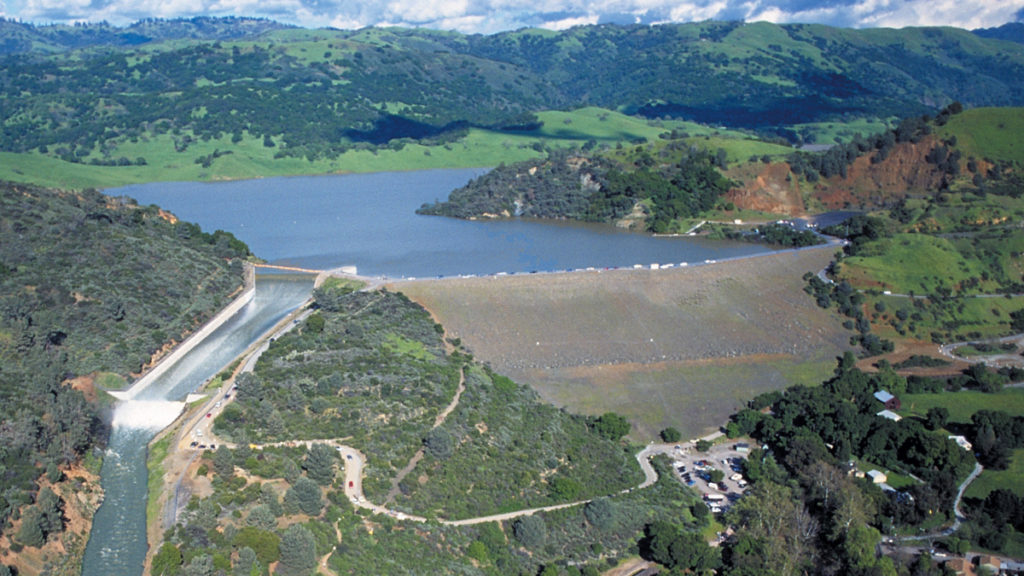
Anderson Dam and spillway from the air when the reservoir was full. Photo courtesy Valley Water
A water shortage emergency condition declaration is one of the strongest actions available under law to the Valley Water. It underscores the need to protect local water supplies for public health and safety and avoid the severe consequences of subsidence if aquifers are depleted and if reservoirs and other supplies can’t sustain the county’s water needs.
“If we don’t achieve our goals, if we can’t get water transferred into the county, if we can’t get any water on the open market, there are options,” Kremen said. “We might borrow some from adjacent water districts.”
Another year of drought will increase the challenges of finding water to sustain two million people living in Santa Clara County as well as Silicon Valley industries and the South Valley’s ag businesses.
“It could be pretty draconian next year,” Kremen said. “We can see what the emergency will be and we want to ensure there is some water in the ground, some carry-over water for next year.”
Farms in South Valley are preparing for a reduction in their supplies, he said.
“The good news is that crop growers in the southern part of our county are some of the best water conservers in agriculture in the state,” he said. “They’ve done a lot of things already.”
However, if next winter and spring bring too little rain, 2022 will be dire for farmers. Row croppers might not plant, he said.




